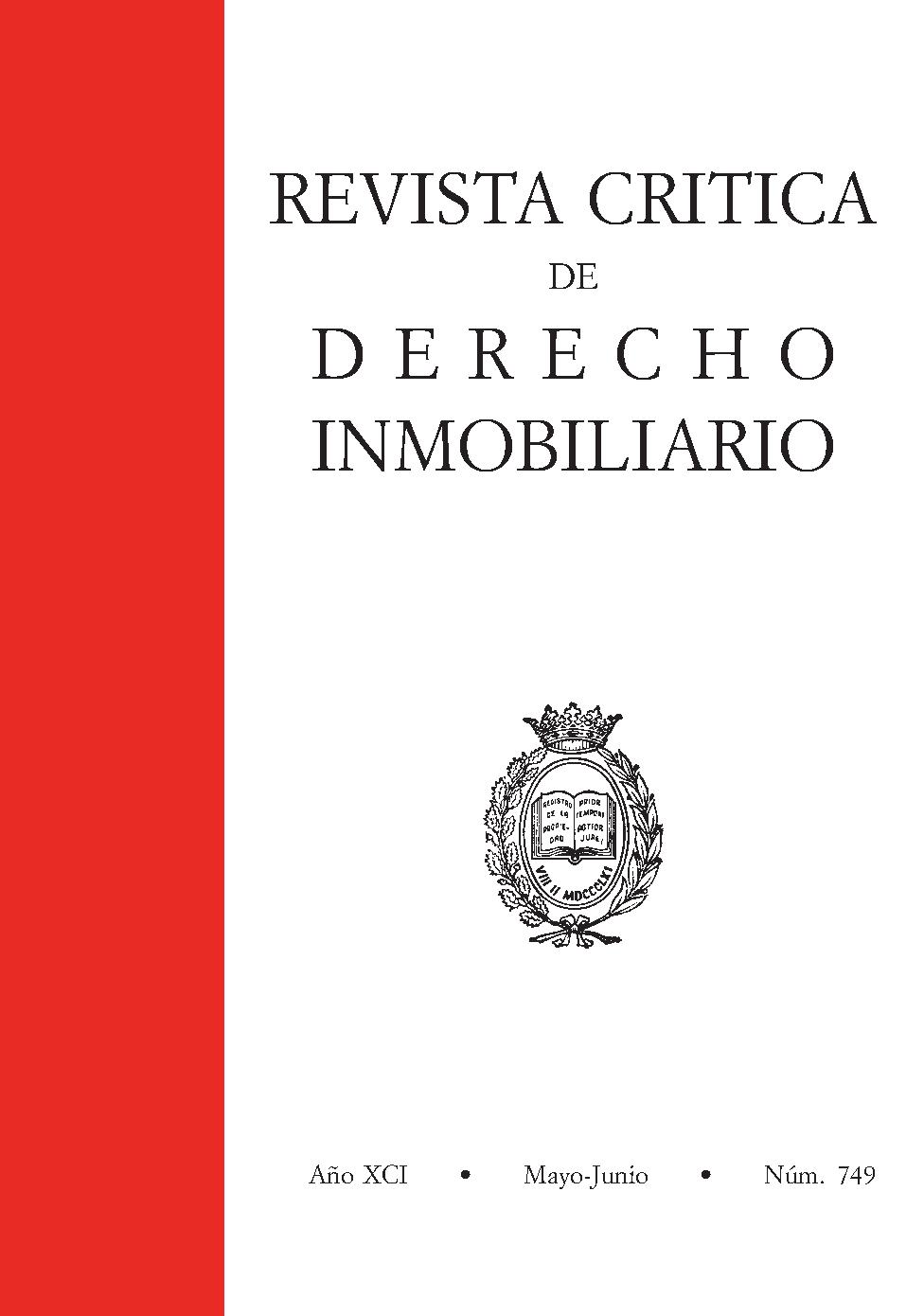AN «AMERICAN READING» OF SECTION 111.1 OF THE SPANISH MORTGAGE ACT. CONCURRENT CHATTEL AND IN-REM ENCUMBRANCES ON FIXTURES SUBSEQUENT TO THE REFORM OF SECTION 2 OF THE SPANISH ACT ON CHATTEL MORTGAGES AND NON-POSSESSORY PLEDGES
Keywords:
SECURITY INTEREST IN TANGIBLES, FIXTURES AND FIXTURE FILING, PRIORITIES BETWEEN MOVABLE, IMMOVABLE SECURITY INTERESTSAbstract
Section 111 .1 of the Spanish Mortgage Act allows the parties to a mortgage to covenant expressly that the mortgage covers the chattel goods permanently placed on the mortgaged property at that time or in future. Where such a covenant is made, the in-rem security interest partially covers a dynamic set of chattel goods known as fixtures. The chattels comprising the set of fixtures are subjected to the mortgage in a way similar to that in which goods determined generically are subjected to other well-known types of security interests in chattel goods, especially non-possessory pledges. This article examines how a mortgage on real property under section 111.1 of the Spanish Mortgage Act fails to subject fixtures to a creditor's full right of pursuit vis-a-vis third parties. When fixtures are removed from the mortgaged property, they are in effect released from the mortgage, even though their release is never registered. Now that section 2 of the Spanish Act on Chattel Mortgages and Non-possessory Pledges has been repealed by the 2007 reform, even when fixtures remain in place problems may nevertheless arise concerning concurrent and colliding chattel and in-rem encumbrances pertaining to the same fixtures. These problems will be far from simple to solve. The events where encumbrances may collide range from the easy (the case in which the security interest in the chattel goods is registered first) to the hard (the case in which the real property mortgage is registered first and includes a fixture coverage covenant). The author examines the gamut of possibilities in the light of international experience with security interests under legislation in the same family as the famous article 9 of the Uniform Commercial Code.









